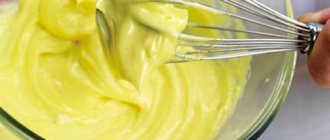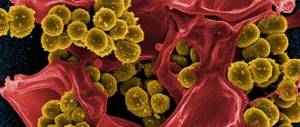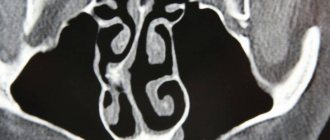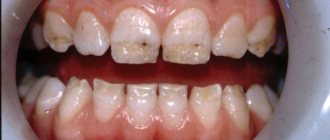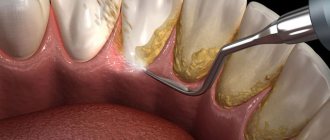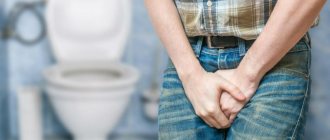What it is
Nephrolithiasis is a manifestation of urolithiasis, characterized by the formation of salt stones in the kidneys.
Kidney stones are a common disease, and urologists quite often encounter this pathology. Stones can form in people of any age; men predominate among patients. Most often they are detected in the right kidney. Bilateral nephrolithiasis occurs in 15% of cases.
Stones in the kidneys
Stones can form not only in the kidneys, but also in the bladder, ureters and urethra. But almost always they first appear in the kidneys and then can descend into the lower parts of the urinary system.
Recognizing the disease
Since pain associated with kidney stones may have an atypical distribution, it is important not to confuse it with the manifestation of some other diseases.
Rosehip for urolithiasis in men
Acute cholecystitis. It is characterized by pain in the right hypochondrium with spread to the right supraclavicular fossa, back, and scapula. There is tension in the abdominal wall muscles. The temperature is elevated, there is a slight yellowness of the sclera and skin.
Acute appendicitis. Pain in the epigastric region accompanied by increased temperature. It spreads to the iliac region and is characterized by a positive Blumberg-Shchetkin sign. Intensifies with movement.
Breakthrough ulcer. It is characterized by acute piercing pain, similar to a dagger injury. There is a board-like tension in the abdominal wall.
Acute pancreatitis. Severe pain begins in the epigastric region and then becomes encircling in nature. The general condition is very serious.
Why kidney stones form
Every patient faced with this disease is interested in the question of why kidney stones form. Their formation is based on the crystallization processes of urine, which contains various salts. The development of kidney stones is accompanied by a number of associated factors. One of the main reasons for the appearance is a violation of mineral metabolism, which is a genetically determined factor. Therefore, people with a genetic predisposition need to pay attention to the prevention of nephrolithiasis.
Salt metabolism disorders can also be acquired, caused by external and internal factors. External factors include climatic conditions, diet and drinking regime. It is known that in hot countries people sweat more and the body quickly becomes dehydrated, as a result of which the concentration of salts in the urine increases and leads to the formation of stones. Dehydration of the body can also occur due to poisoning or infectious diseases accompanied by vomiting and diarrhea.
For residents of northern regions, there are a number of risk factors that contribute to the development of the disease:
- lack of vitamins A and D;
- lack of ultraviolet radiation;
- predominance of fish and meat in the diet.
In addition, drinking “hard” water (with lime salts) and excessive consumption of spicy, sour and salty foods contribute to alkalization and sedimentation.
Internal factors include hyperparathyroidism, in which, as a result of increased activity of the parathyroid glands, the content of phosphates in the urine increases and calcium is washed out of the bones. Also, a violation of mineral metabolism can be observed with osteoporosis, osteomyelitis, fractures, spinal injuries, spinal cord injuries, gastritis, peptic ulcers and colitis.
2.1. Pathogenesis
Many people are also interested in the question of how kidney stones form and what are the reasons for their formation. The formation of stones is a complex physicochemical process that occurs when colloid balance is disturbed and changes in the renal parenchyma. One of the main reasons for the appearance of stones is an infection in the urinary tract, as well as prostatitis, anomalies of the kidney, hydronephrosis, prostate adenoma, diverticulum and other diseases that interfere with the passage of urine.
With a slow outflow of urine from the kidney, stagnation occurs and the urine becomes oversaturated with various salts, which subsequently precipitate. Against the background of urostasis, the developing infectious process leads to the entry of bacteria, mucus, pus and protein into the urine. All these substances participate in the formation of the core of the future calculus, around which salts crystallize.
Often, stones begin to form in the renal papillae. Initially, microliths are formed in the collecting ducts, most of which are not retained in the kidneys, but are washed out in the urine. But when the chemical properties of urine change, crystallization processes begin, and microlites are retained in the tubules. The stone may continue to grow in the kidney or may move down into the urinary tract.
Possible complications of kidney stones
Kidney stones can lead to the following complications:
- chronic pyelonephritis. With this disease, nagging pain occurs in the lumbar region. In the chronic form of pyelonephritis, the kidney tissues are affected, which negatively affects the functioning of the organ;
- development of acute obstructive nonspecific inflammatory process. It occurs when the outflow of urine is disrupted when a stone is moved;
- pyonephrosis. With irreversible damage to the kidney, a large amount of pus accumulates in the organ;
- nephrosclerosis. With this disease, the kidney tissue is transformed into connective scar tissue;
- chronic renal failure. This complication of urolithiasis leads to intoxication of the body with protein breakdown products. Chronic renal failure leads to decreased performance and deterioration of a person’s general well-being. In severe cases, the disease often ends in death;
- the occurrence of prostatitis in men.
If pyonephrosis is not treated, irreversible damage to the kidney tissue occurs. This increases the risk of life-threatening complications.
In some cases, pyonephrosis leads to renal amyloidosis, which can provoke renal failure.
In the presence of a large pathological focus, when the capsule of which is damaged, pus spreads to the abdominal cavity, the disease provokes the occurrence of:
- sepsis (in the absence of timely medical care);
- paranephritis;
- peritonitis;
Classification
Based on their chemical composition, there are 7 types of stones that can be found in the kidneys.
Oxalates . The stones consist of calcium salts of oxalic acid. They are dense, black-gray in color, and have a spiky surface. They are formed in both acidic and alkaline urine environments.
Oxalate stone
Phosphates . Consist of calcium salts of phosphate acid. They are soft, crumble easily, have a smooth or slightly rough surface, and are white-grayish in color. Formed in the alkaline environment of urine, they grow very quickly, especially in the presence of infection.
Phosphate stones
Urats . Consist of uric acid salts. Dense, color varies from light yellow to brick red, the surface is smooth and finely pinpointed. Formed in the acidic environment of urine.
Urate stones
Carbonates . They are formed from calcium salts of carbonic acid. Soft and smooth, light in color and can be of various shapes.
Carbonate rocks
Cystine stones . The amino acid cystine is formed from sulfur compounds. Soft, with a smooth surface, have a rounded shape and a yellowish-white color.
Cystine stones
Protein stones . They are formed mainly from fibrin with an admixture of bacteria and salts. Soft and flat, small in size, white in color.
Protein stones
Cholesterol stones . Rarely found, they are formed from cholesterol. Soft, easily crumbling black stones.
Cholesterol stones
Sometimes stones of mixed composition can form. In 3-5%, coral-shaped stones are formed; they grow in the pelvis and in appearance resemble its cast, which repeats the size and shape of the kidney ducts.
coral stone
Symptoms of nephrolithiasis
Symptoms of kidney stones depend on the size, composition and number of stones. A typical clinical picture includes:
- lower back pain;
- renal colic;
- hematuria;
- pyuria;
- stone passage.
Pain due to kidney stones develops due to a violation of the outflow of urine. They can be aching, dull, and when blocked, renal colic can develop. With coral stones, the pain is dull and mildly expressed.
An attack of renal colic is accompanied by a sudden sharp pain in the lumbar region, which spreads along the ureter. Against the background of renal colic, frequent painful urination, nausea, vomiting, and flatulence occur. The pain attack is quite severe and very often it can only be stopped with the help of a narcotic drug. Kidney stones can give any symptoms, the patient will be agitated, worried and will constantly look for a comfortable position to relieve pain.
The temperature with kidney stones can reach 39ºC.
Clinical picture
How do kidney stones pass? Kidney stone disease manifests itself in different ways, depending on the nature of the stones, their origin and concomitant pathologies. There are often cases of asymptomatic progression, when symptoms did not appear until the formation began to recede. But more often the main symptoms are still present.
Signs of kidney stones:
- Pain. A feeling of pain with urolithiasis syndrome is observed when a stone leaves the kidney, moving along the urinary ducts. The intensity of the sensation as a stone comes out varies, from discomfort to unbearable pain (renal colic). The location where the pain is localized depends on the location of the stone itself (the area where it is lodged during movement). For example, a calculus at the exit of the kidneys in men or women causes patients to complain of lumbar pain. Getting stuck in the ureter will cause similar pain radiating to the lower extremities, lower abdomen, genitals, sometimes in such cases the sensations are concentrated in the navel area.
- Blood in urine. This symptom is called hematuria, and often accompanies nephrolithiasis. There may be very little blood or a significant amount, turning the urine a distinct red color. The appearance of blood is caused by damage to the ureters and kidneys during the advancement of the stone, especially if the stones have sharp edges. After renal colic, hematuria is almost always observed.
- Urinary problems. Patients experience an irresistible urge to urinate, and the outflow of fluid is impaired. This phenomenon occurs after a stone enters the bladder and during its further movement through the urethra. If the outlet from the bladder is completely blocked, a state of anuria will develop, fraught with serious consequences. But even a violation of the outflow, when it is only difficult but not stopped, will cause such negative consequences as pyelonephritis. Patients experience fever, the temperature rises up to 40 degrees. A stone in the kidney or bladder causes symptoms of general poisoning of the body by unresolved decay products. One of the serious complications of kidney stones is organ failure.
- There may be visible signs of sand in the urine.
- Symptoms of kidney stones in men can include complications in the intimate area. Kidney stones in women, when passing through the urinary tract, often provoke cystitis.
The pelvic type of the disease is characterized by the formation of many small stones. Nephrolithiasis in this case is recurrent, the patient experiences repeated attacks of acute pain.
The coral form is considered the most severe type of kidney stone pathology. It is caused by a stone of complex structure, occupying most of the natural ducts and cavities of the organ. With such kidney stones, the symptoms in men and women are macrohematuria (large amounts of blood in the urine), which appears episodic, and relatively tolerable pain from time to time. If the disorder was not detected (or was not paid attention to), without treatment it will cause serious consequences in the form of pyelonephritis, and, as the latter develops, kidney failure.
The symptoms of kidney stones in women are similar to those in men, since the mechanism of development of the disease is generally the same. When urolith passes through the urethra, the symptoms in women are slightly less intense, due to the peculiarities of the anatomy.
Diagnostics
Since the signs of kidney stones do not differ between men and women, the diagnostic methods for this disease are also the same for everyone.
Anamnesis, a typical picture of renal colic, laboratory, and instrumental studies help to recognize kidney stones.
To confirm the diagnosis, studies such as:
- 1 Urinalysis after an attack . Fresh red blood cells, white blood cells, protein, salts and bacteria are found in the urine.
- 2 Biochemical analysis of urine and blood . Helps determine the cause of stone formation.
- 3 ultrasound . The anatomical changes in the organ, the presence of stones, their location and mobility are assessed.
- 4 X-ray . With survey urography, most stones can be identified. Only protein and urate stones are not visible on x-rays. They can be identified using excretory urography or pyelography.
- 5 Computed tomography . Allows you to see all stones of all sizes.
Possible complications
It is important for a patient with urolithiasis to know how to treat the disease and the dangers of kidney stones. After all, their appearance can threaten the patient not only with the loss of an organ, but also with death.
Kidney stones most often lead to the following consequences:
- 1 Acute or chronic pyelonephritis . Infectious disease with nagging pain in the lumbar region.
- 2 Pyonephrosis . Terminal stage of purulent-destructive pyelonephritis. The affected kidney is removed to prevent the infection from spreading.
- 3 Nephrosclerosis . A disease in which healthy kidney tissue is replaced by scar tissue.
- 4 Kidney failure . In the blood plasma, the level of nitrogen-containing compounds increases, among which are uric acid and creatinine. These substances poison the body, which can even lead to death.
- 5 Acute cystitis with injury to the mucous membrane of the bladder. This disease is caused by inflammation, which occurs especially often during hypothermia, since against a background of weakened immunity, the infection can easily penetrate the bladder.
- 6 Urethritis , in which bacteria penetrate through the damaged mucous membrane of the urethra.
Common complications of nephrolithiasis:
- high blood pressure;
- anemia;
- tachycardia;
- dizziness;
- deposition of salts in various organs.
Prevention
Preventive measures are necessary to prevent relapses of the disease. These include:
- maintaining an optimal drinking regime, drinking quality water,
- balanced diet,
- regular herbal medicine,
- taking medications prescribed by a doctor,
- gymnastics,
- treatment in a sanatorium 1-2 times a year.
Urolithiasis is a serious disease that, without proper treatment, leads to kidney failure. Salt deposits can be removed using conservative and surgical methods. In the future, it is necessary to follow preventive measures to reduce the risk of relapse.
Treatment of kidney stones
Treatment of nephrolithiasis depends on the size of the stones. Sand in the kidneys can be eliminated through diet and giving up bad habits. Small stones from 1 to 6 mm are removed using uroliths, antibiotics and antispasmodics.
7.1. Medication
Drugs that dissolve stones are prescribed depending on the type of stone. Let's look at some options.
Allopurinol helps to cope with urates; it reduces the acidity of urine.
The following drugs help get rid of phosphates:
- 1 Madder extract . This drug has no side effects.
- 2 Spilled . A very effective remedy: removes crystals, normalizes metabolic processes, improves urination. A natural drug with minimal risk of side effects.
Prolit has antiseptic properties, so it can treat inflammation in the kidneys. Easy to use, the drug is produced in the form of capsules. Removes fine phosphates and sand in 1.5-2 months.
The disadvantage of the drug is its ability to cause allergic reactions. The drug is also contraindicated for pregnant and breastfeeding women, as well as patients with atherosclerosis and those prone to neuroses and insomnia.
Preparation Prolit
Helps get rid of oxalates:
- 1 Cyston . This is a natural drug that has a complex effect on the urinary system. Relieves inflammation and eliminates the root causes of the disease.
- 2 Asparkam . Prescribed only under medical supervision. Approved for use by pregnant and lactating women, but with strict adherence to instructions and dosages.
There are a number of medicines with universal action; they effectively remove different types of crystals. These include:
- Penicillamine;
- Blémarin;
- Uralit-U;
- Canephron;
- Urolesan.
For pain relief, antispasmodics are prescribed such as:
- Baralgin;
- No-Shpa;
- Spasmalgon.
7.2. Crushing stones
Stones up to 15 mm in size are crushed by contact laser into dust. A soft or rigid endoscope is inserted through the urinary tract into the kidney. The procedure is painless and is recognized as the best method of treating urolithiasis.
Laser crushing of kidney stones
External lithotripsy is performed using ultrasonic shock waves. Do not use if dense and overly large crystals are present. The removal of fragments is very painful.
External lithotripsy
7.3. Surgical
Stones larger than 16 mm are removed using laparoscopy. This method is used when the ureter is too narrowed or the situation is very advanced. In the modern world, instead of abdominal surgery, only 3-4 punctures are made, through which the stones are quickly removed, without leaving scars on the body.
Any method of treating nephrolithiasis requires a period of rehabilitation. During this time, it is necessary to follow a diet and drinking regime, as well as maintain a certain level of physical activity.
7.4. Folk remedies
In order to reduce the signs of kidney stones, you can eat 1 kg of berries per day for 14 days during the watermelon ripening season. You can also dry the striped peels to drink tea with them for 2 weeks in winter.
Parsley infusion will help with phosphates. To prepare, you need to pour 30 g of greens into 200 ml of boiling water, leave overnight and drink for 2 months before breakfast and dinner.
An infusion based on rosehip root is prepared from 5 tablespoons of crushed dry root and 1 liter of water. Boil the solution and leave for 12 hours. Drink 250 ml 3 times a day.
Getting rid of the disease forever
Drinking water
There are ways to eliminate the problem without resorting to surgical treatment. Doctors recommend following five simple and easy rules that can help get rid of tumors in the kidneys:
- It is necessary to drink enough liquid. Regardless of the type, size or type of stone, the doctor prescribes a patient with urolithiasis to drink a large volume of water. If a person has concentrated urine, the risk of stone formation remains very high. To dilute the composition and reduce the salt content, it is important to drink a lot of water when flushing the kidneys. Experts recommend drinking at least two liters of water daily, not counting other types of liquid. People of different sizes and lifestyles will need different amounts of water. This needs to be taken into account, but there is a simple formula that allows you to most accurately calculate the average person's water needs. For every kilogram of body weight, thirty grams of water is required.
- It is necessary to adhere to the rules of rational nutrition and follow a therapeutic diet. Therapeutic nutrition depends on the characteristics of the stones and varies in each specific case. The specialist will recommend a table, taking into account the nature of the formation. Regardless of this, there are general recommendations for proper nutrition. You need to eat food often, at least five times a day, in small portions. If there are no special recommendations from a cardiologist, you need to drink water even at night. This water regime will reduce the risk of stone growth in the kidney organ.
- You should move a lot and engage in feasible sports. Insufficient physical activity causes the formation of kidney stones. During a stable condition, without exacerbation, experts recommend leading an active lifestyle: swimming, walking, yoga, exercise therapy. If the stone moves, it is necessary to limit physical activity and avoid bending and lifting heavy objects. It is recommended to move a lot, while lightly tapping your heels on the floor. This simple exercise makes it easier for the stone to move through the urinary tract.
- Take all medications prescribed by your doctor. It is necessary to strictly follow all the specialist’s instructions; the result of the treatment depends on this. The prescription list may vary, but there is a traditional treatment regimen. The doctor prescribes drugs to soften the base of the stone, diuretics, painkillers, and, if necessary, anti-inflammatory compounds and antibiotics.
- Do not ignore painful manifestations, seek medical help in a timely manner. If you have pathological symptoms, visit your doctor. If the stone exceeds a diameter of five millimeters, the person experiences excruciating pain. Promoting a large stone is dangerous due to its consequences. A timely visit to a doctor will allow you to receive adequate treatment and avoid serious problems. Considering the patient’s condition, the doctor may prescribe one of the existing treatment options: lithotripsy, endoscopic intervention, or surgery.
Read
Ways to cleanse the kidneys at home
By following the recommendations of specialists regarding the treatment of urolithiasis, you can get rid of kidney stones and minimize the risk of their occurrence in the future.
Diet for urolithiasis
The diet is selected individually by the attending physician. If phosphates are present, it is necessary to exclude spicy foods, pumpkin, potatoes and legumes from the diet; they are best replaced with kefir, grapes, fruits and sauerkraut. It is recommended to drink mineral water, which increases the acidity of urine.
If urates are present, the patient is limited in the consumption of foods high in purines, such as chocolate, red meats and broths based on them, fried foods, spicy foods, and alcohol. It is recommended to drink alkaline water, for example, Borjomi, Essentuki No. 4 and 17, Slavyanskaya.
When oxalic acid salts form, citrus fruits, currants, nuts, sorrel, spinach and cocoa are excluded from the diet.
Prognosis and prevention
Even after surgery, there is no guarantee that urolithiasis will not return. Without special treatment and prevention, in 78% of cases, symptoms of kidney stones return. It is very important to follow your doctor's recommendations and lead a healthy lifestyle.
Video Photo Tables
Causes of stone formation
Why kidney stones form is explained by many factors. First of all, these are negative environmental conditions, which explains the increase in incidence. Internal causes have a certain influence on the appearance of stones.
Predisposing factors that cause stones:
- low physical activity,
- dietary features - large amounts of protein, salt, spices, sour vegetables and fruits,
- drinking water of poor quality,
- hypovitaminosis,
- metabolic disorder,
- long-term treatment with certain drugs,
- harmful working conditions,
- abnormal kidney structure,
- inflammation of the urinary organs - pyelonephritis, cystitis.
Some pathologies are not the direct causes of stone formation, but increase the risk of their occurrence. These include chronic gastrointestinal diseases, severe injuries, and dehydration.
Stones aggravate the course of pyelonephritis and other inflammatory processes.

